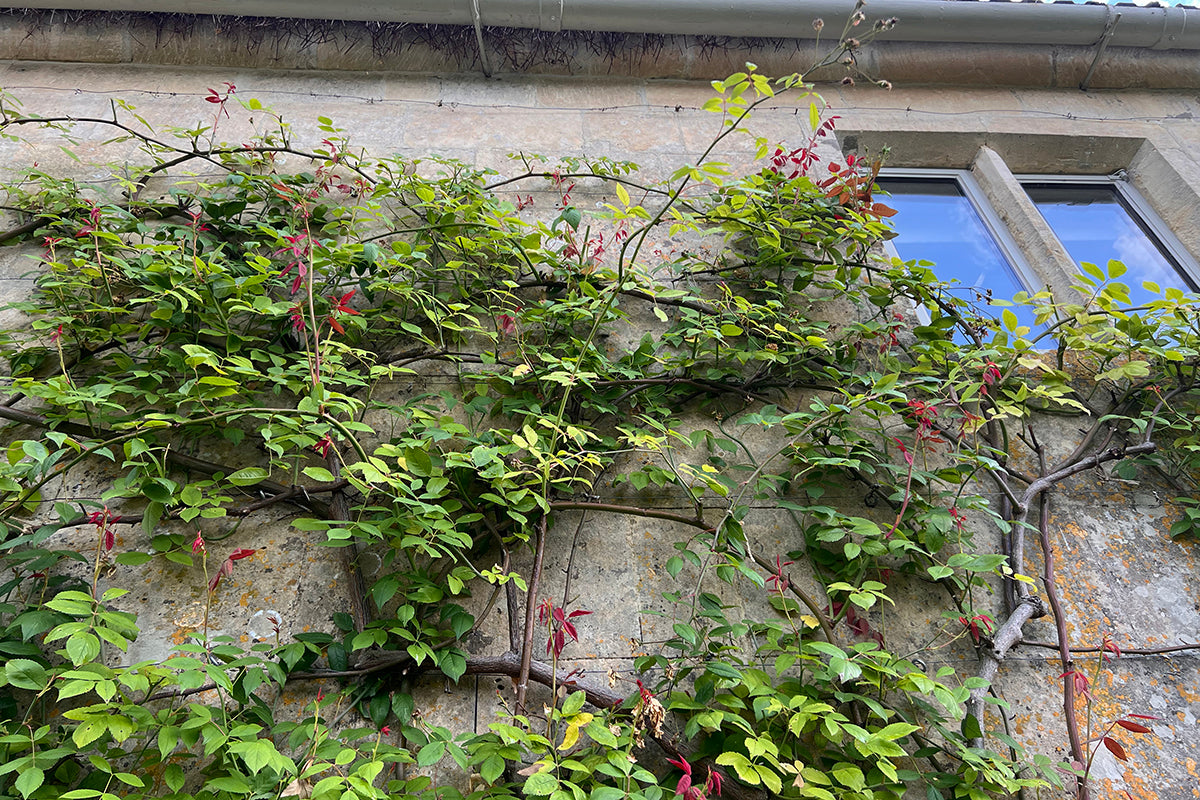Gardeners' notes - what to do in August!

Prune rambling roses
Opinions vary on when rambling roses should be pruned. Some like to start pruning immediately after flowering, some will prune now, and others will wait until more time is available in the winter. If you have time, and particularly if your garden is open to the public, you might like to tidy them up now.
Rambling roses will flower next year on the new growth produced this year. Those long flexible whips, often several metres long, are the ones you want to preserve for next year's flowers. Any stems that have flowered this year can be removed and, with specimens that have been abandoned for several years, up to 85% of the old wood can be removed - it may seem brutal but the results from the rejuvenated plant will be spectacular and future pruning will also be far easier. There are occasions when you might want to leave some of the older growth - covering a structure like a large pergola, a cottage wall, or when you let the rose ramble freely and unhindered through trees.
With secateurs and loppers, remove the old unwanted material. The next stage is to tie in the new growth onto wires that are hopefully already in place. The secret to tying in is to take the tips of the ‘whips’ and bend them down to the horizontal. In doing so you remove ‘apical dominance’ - the propensity for flowers to form at the tips. This gives a better spread of flowers over the structure and brings them down nearer to eye level. A mulch of well rotted manure or compost can be spread around the base of the plant when you’re finished.
Prune apple trees
August is a good month to give your apple and pear trees a summer prune. In doing so, you’ll keep the tree compact, remove aphid infested leaves, and allow sun to get through and ripen the swelling fruit.
What you want to do is remove the new upright stems that have grown this year which on some vigorous trees can be nearly a metre long. A tripod ladder can be useful for some of the larger more mature specimens you may have. It’s not essential to pay special attention to cutting above a leaf node or angling your cuts. Simply remove approximately 85% of the stem. Any detailing can be done during your winter pruning regime.
The prunings can be chipped and added to your compost heap or stacked in an out-of-the way corner where they can be a refuge for insects and other invertebrates.
Sow wallflowers
Now is a good time to plan ahead and sow wallflowers for a colourful display next spring. We use any vacant space in the vegetable garden and sow into shallow drills, cover with soil, and water well. They always germinate quickly and rarely need any more water unless there’s an especially prolonged period of dry weather.
In hot summers flea beetles can eat the leaves creating a shot-hole effect. If the damage isn’t too severe the plants can easily outgrow the problem, but in anticipation we often cover the seedlings with a fine horticultural mesh or fleece to protect them. T his needs to be done at the time of sowing.
The plants will continue to grow through the autumn. After Christmas we dig them up with a hand fork and transplant them into the flower garden pinching out the tips to promote bushier plants. We follow up by planting tulip bulbs amongst them and then mulching.
There are plenty of wallflower varieties to choose from but we particularly like scented bright red ‘Fire King’. ‘Vulcan’, also scented, is a more compact and neat variety reaching 30cm in height in a velvety crimson. The third variety is ‘Sunset Orange’. Offered as F1 seeds they’re more expensive but reliably consistent.











